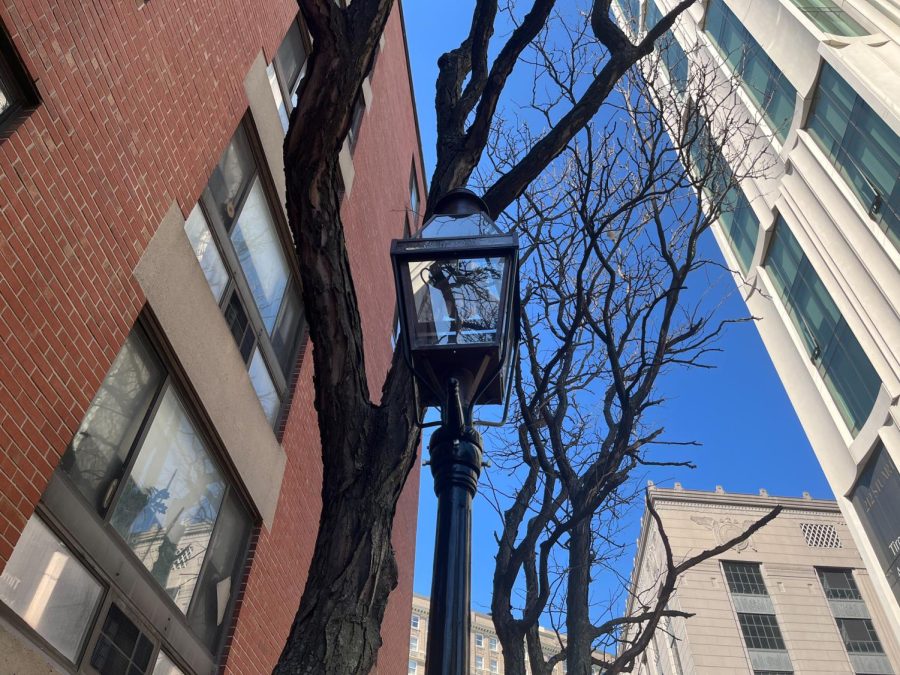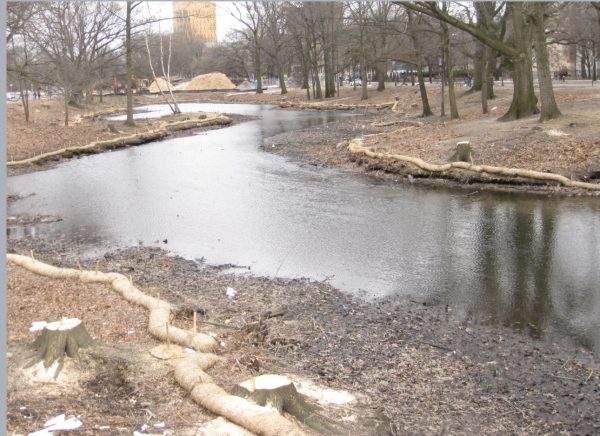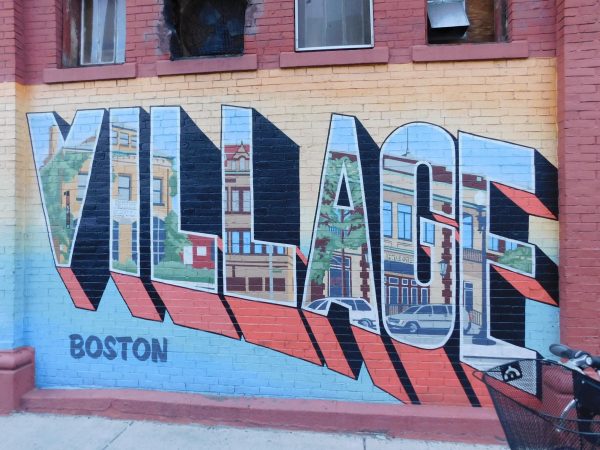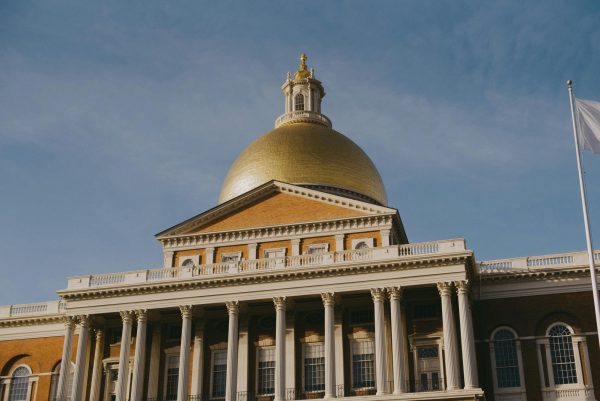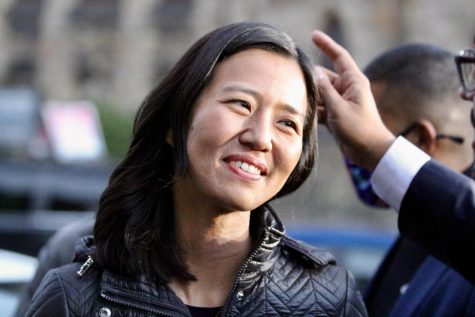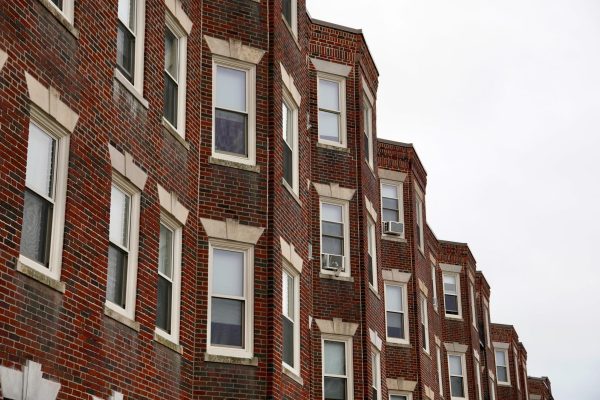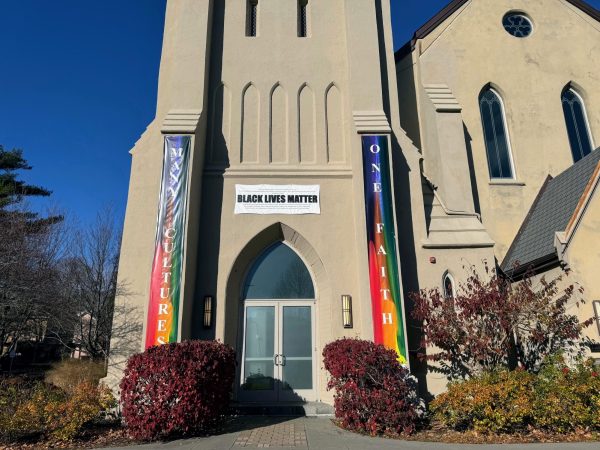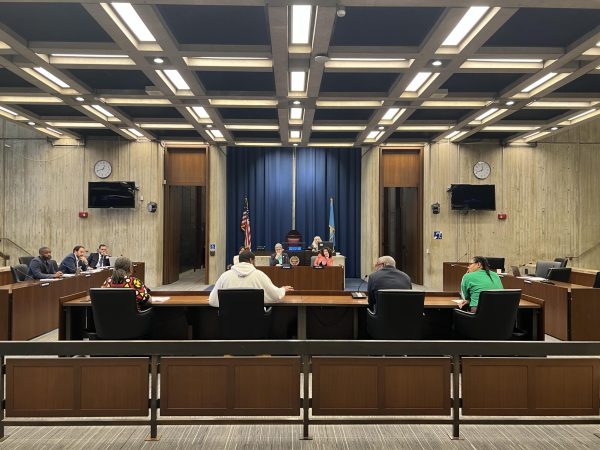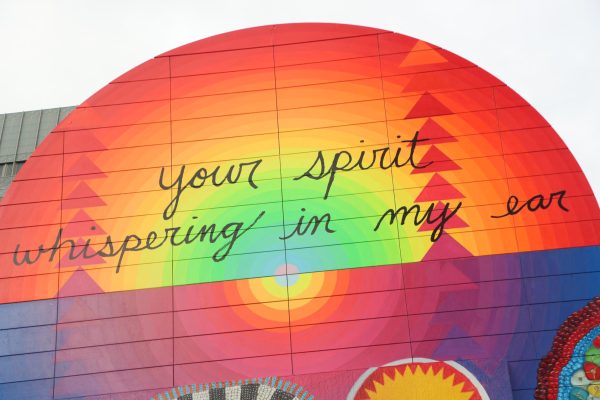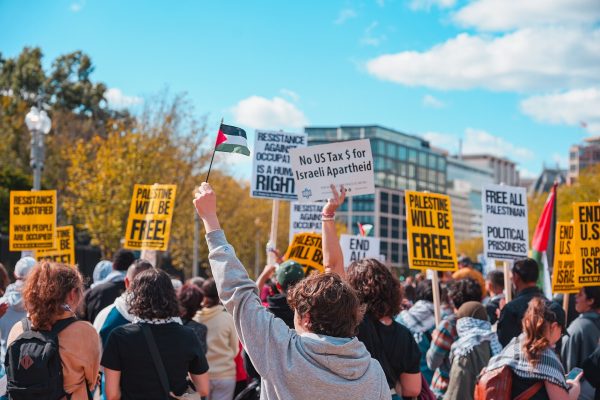Boston to switch its 2,800 gas lamps to LEDs
“For the city to really bring down our carbon emissions in a massive way, street lighting is an important piece of the puzzle”
Photo: Emily Niedermeyer
Pilot of retrofitted electric street light at 212 Stuart St. in Bay Village.
Boston’s 2,800 natural gas street lights, which populate the neighborhoods of Beacon Hill, Back Bay and Bay Village, are a historic part of the city. These traditional lights, however, may not stay gas-fueled for long.
The City of Boston has plans to retrofit its gas street lamps into new LED-powered street lamps.
According to an email from a city spokesperson, electrifying these natural gas street lights “is a strategy that the City of Boston is studying to help us achieve our goal of carbon neutrality by 2050 while maintaining Boston’s historic integrity.”
Gas lamps have the equivalent greenhouse gas emissions of 1,100 cars annually (without counting leaks or unburned methane from broken mantle). According to the Massachusetts Department of Energy Resources’ Energy Policy Planning & Analysis Division, two gas lamps consume as much gas each year as an average house.
The annual emissions of an existing gas lamp pole is 41 times greater than that of a 36W LED replacement.
“For the city to really bring down our carbon emissions in a massive way, street lighting is an important piece of the puzzle,” said City Councilor Kenzie Bok, who represents District 8, which includes Beacon Hill and Bay Bay.
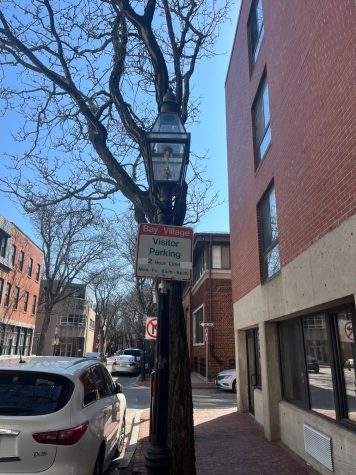
Although the gas lamps may not be a huge portion of the overall city emissions — 9% of municipal and 0.2% of citywide emissions, respectively — they are a massive disproportion of street lighting emissions. In Boston, just 4% of the city’s street lights are gas lit, but they account for 37% of the emissions from street lights.
“The only way we’re gonna get there from here, in terms of our carbon emissions targets, is if we ask every sector of our city operations to identify ways to most efficiently cut emissions in their area,” Bok said. “That’s what the street lighting department has done here.”
The gas-to-electric retrofit is part of the Renew Boston Trust program, which began in 2017 to conduct energy audits and invest in conservation upgrades for municipal buildings.
Renew Boston Trust established a new Exterior Lighting Program to reduce energy use by retrofitting streetlights with more efficient lighting and adding controls. In September, Mayor Michelle Wu announced that the program began as an energy audit of all exterior city-owned lighting in agreement with Ameresco, Inc. The energy services company will go to each light and record its location, technology, condition, among other relevant data. Real-time progress of the audit shows that Renew Boston Trust has completed the information collection of 71,069 streetlights for the inventory.
Councilor Bok grew up in Bay Village and has long valued the gas lamps, calling them a “punctuation point of the neighborhood,” and how essential they are to the historic fabric of the neighborhood, especially during the winter seasons.
“The gas lamp is the symbol of the Bay Village architectural district,” she said. “My whole life we hung wreaths on them in Bay Village.”
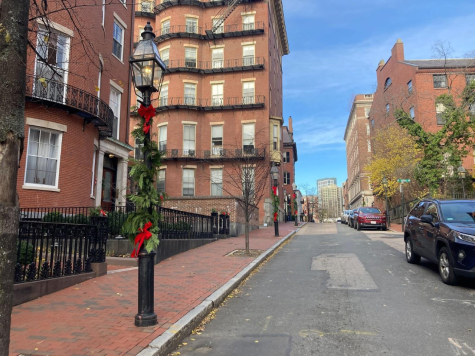
Bok doesn’t have a problem with the retrofit – she just believes it must be done in a historically sensitive way.
“Having fixtures that match the existing fixtures is really important to the historical integrity, but I don’t think it’s important to the historical integrity that they be fed by gas,” she said.
Bok talked about her grandmother, who raised her father in Beacon Hill. In the 1950s, her grandmother asked her neighbors to swap out their coal furnaces for natural gas. Not only were they bad for the environment, but the pollution was giving kids asthma, she told them.
Bok still has a coal chute at her family’s Beacon Hill house, but doesn’t believe it’s “historically necessary” to actually be filled with coal and cause pollution by using an outdated form of heating.
“I think that’s always the tension of the historic district,” she said. “How do you update with the latest technology and knowledge about public health while also maintaining that strong connection to the past?”
Bok believes the work done in Bay Village, which she engaged in, has given “strong encouragement” for the retrofit program.
On 212 Stuart St. in Bay Village, a pilot program started after construction resulted in seven gas lamps being removed from the site. Greystar, the developer, agreed to restore the gas lamps at the conclusion of the project, but the construction opened up an opportunity for a gas-to-electric mock up of what the historic gas lamps could look like when converted to LED.
Though most people supported green energy changes, problems arose when civic leaders and citizens were unaware of the project.
Tom Perkins, vice-president of the Bay Village Neighborhood Association, was president in the spring when the city first announced the plan.
“We had some issues with the program when it first rolled out, because we weren’t consulted on it,” he said.
The Bay Village Neighborhood Association wanted to be included and have a say on the mechanics of the mock-up, and sometimes only learned information about the plans through the news.
“We found out about things via the Boston Sun rather than them directing things to us,” said Perkins.
Perkins also had concerns about Bay Village being a “guinea pig” in the retrofit process because it is the smallest official neighborhood in Boston, thus having less area, citizens and political power.
“We know from past city projects that if you wind up with the unicorn and then everybody else goes with a slightly different design, then you’re stuck,” Perkins said. “Then you get stuck in a no man’s land with something that the city won’t maintain.”
The Bay Village Neighborhood Association wanted to sign off on something that was accepted by their “sister neighborhoods,” so Perkins invited other civic leaders to help create something that was acceptable to them and citizens.
“We did hear a lot of blowback when the pilot first was installed, because originally the pilot was too bright and too white … That concerned neighbors,” said Perkins. “Fortunately, we were able to work with the city to get that dialed correctly. Once we did get that, then I would say the feedback has been positive.”
Now, civic leaders are much happier with the project.
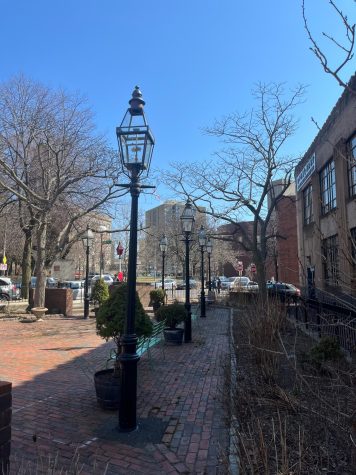
“I think a lot of people walk into Bay Village by the new project, and they don’t even realize that these lamps are LEDs and the ones down the street are gas,” said Perkins. “They really have done a good job in capturing the look.”
While the replacement of seven gas lamps went smoothly coordinated with the construction, many question how the entire process will play out. Despite the general favorability of the retrofit, this massive construction project might not achieve the budget and climate goals the city is working towards.
“Although the existing lamp is much less efficient and has much higher emissions and operating costs, once you account for ripping up the street and … look at it from an end-to-end green solution perspective, there’s not really a payoff,” said Perkins. “Where the payoff comes is in an incremental program, because all of these things have a finite life.”
The easiest way to swap out the lamps, Perkins said, is to do so when other construction projects are happening and are tearing up the streets or sidewalks. These offer opportunities to make the swaps without additional costs or disruptions.
Bok agrees with the Bay Village standpoint.
“Like any public works project, we have to do it in an intelligent way from a budget perspective,” she said. “It makes sense to do retrofits when we’re already tearing up a street for other work.”
Bok added that the city has not had discussions about the budget for the retrofit.
Elliot Laffer, chair of the Neighborhood Association of the Back Bay, has seen a variety of neighborhood projects from start to finish. He has lived in Back Bay for over 40 years and has been involved in the Neighborhood Association since 1977.
Though he echoed similar concerns as the Bay Village Neighborhood Association concerning city outreach, for now, issues have been resolved .
“We expect that when they replace the lights they’ll replace the lights appropriately,” said Laffer. “This is a protected architectural, historic district, and the city has committed that when they replace the lights, they’ll replace them with lights that look like what we have now, so we’re comfortable with that.”
He believes that if there is more cause for concern, there will be more discussion amongst the public and civic leaders to solve the problem.
“It’s not an unprecedented thing,” he said. “It’s an issue and people will look at it, but like other issues that relate to climate change, we have to adapt. And in the big picture of adaptations, this one’s pretty easy.”
With the collected data and full audit report of the city’s exterior lighting, Boston will begin enforcing energy conservation measures to reduce electricity and natural gas use. This work will be implemented over several years, with a services agreement negotiated in spring 2023 and installations to start in the summer.
It’s clear that changes to street lights and any gas-to-electric retrofit will be a long and meticulous process, but it won’t affect traditions in these historical neighborhoods.
Richelle Gewertz, a volunteer at Beacon Hill’s gas lamp decoration weekend in December, believes that the new LED technology is a step in the right direction as long as the traditional lamp pole remains the same to decorate every year.
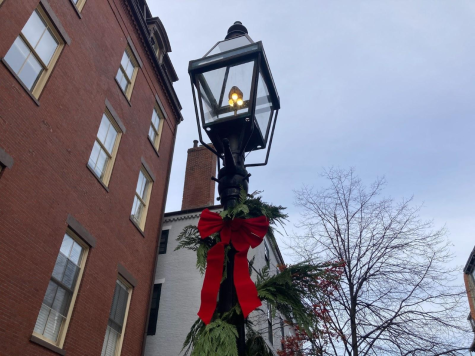
A Beacon Hill resident for six years, Gewertz works with the Beacon Hill Civic Association’s Architecture and Zoning & Licensing Committees and was a part of the community conversation about the retrofit and the Bay Village mockup.
Gewertz believes that the community tradition of embellishing the charming streets of Beacon Hill won’t stop if the gas is changed to electric.
“Does it physically need to be gas?” Gewertz asked. She shook her head. “The look and feel matters the most.”
This is what’s important to the communities who inhabit these areas so important to the history of Boston.
“I think people live in these historic neighborhoods because they love the history and they love the architecture, and it’s also a reason that tourists come to the City of Boston from all over the world,” said Bok. “I think we want to, in any updates we do, be sensitive to that historic fabric and really make sure to roll it out in the right way and get it right.”

